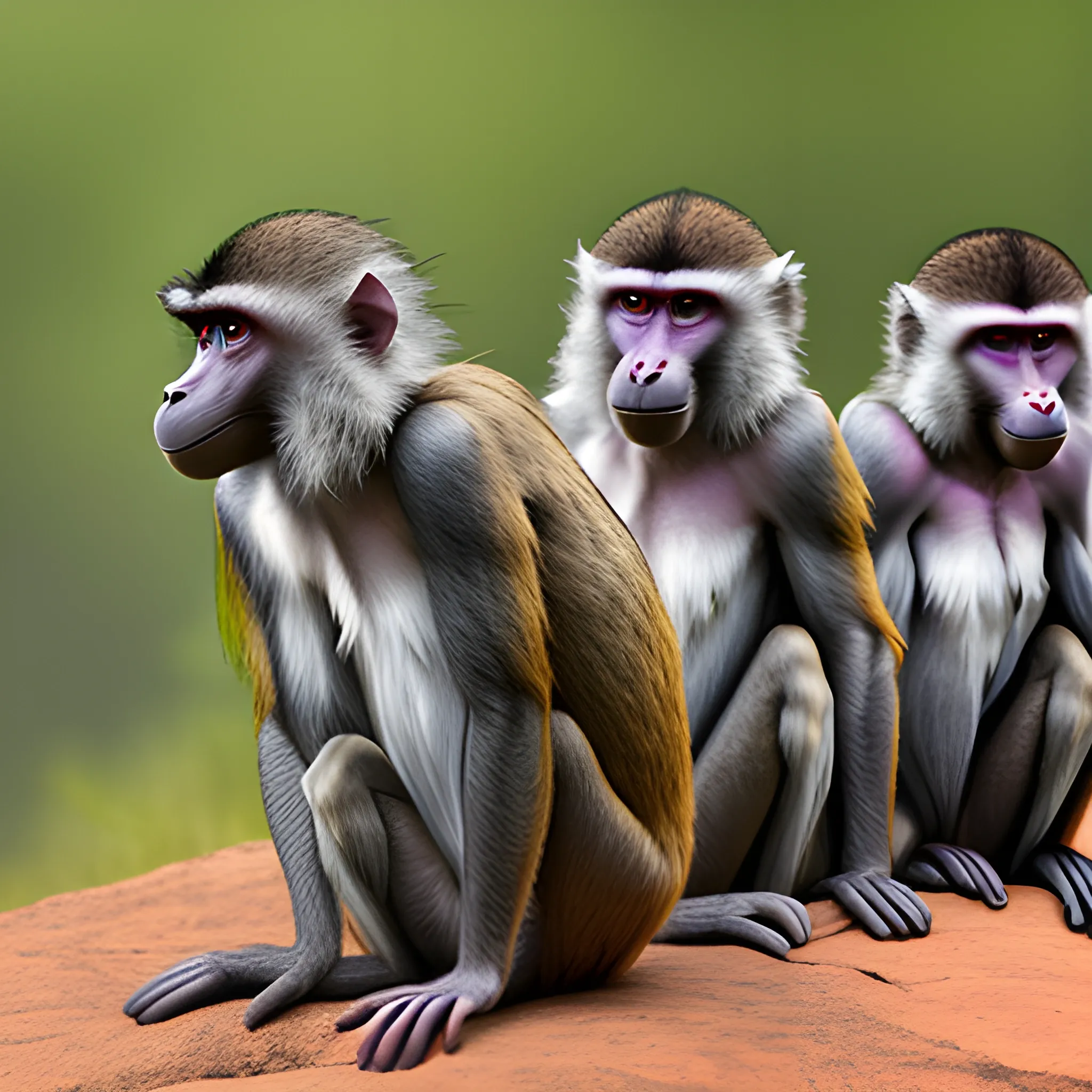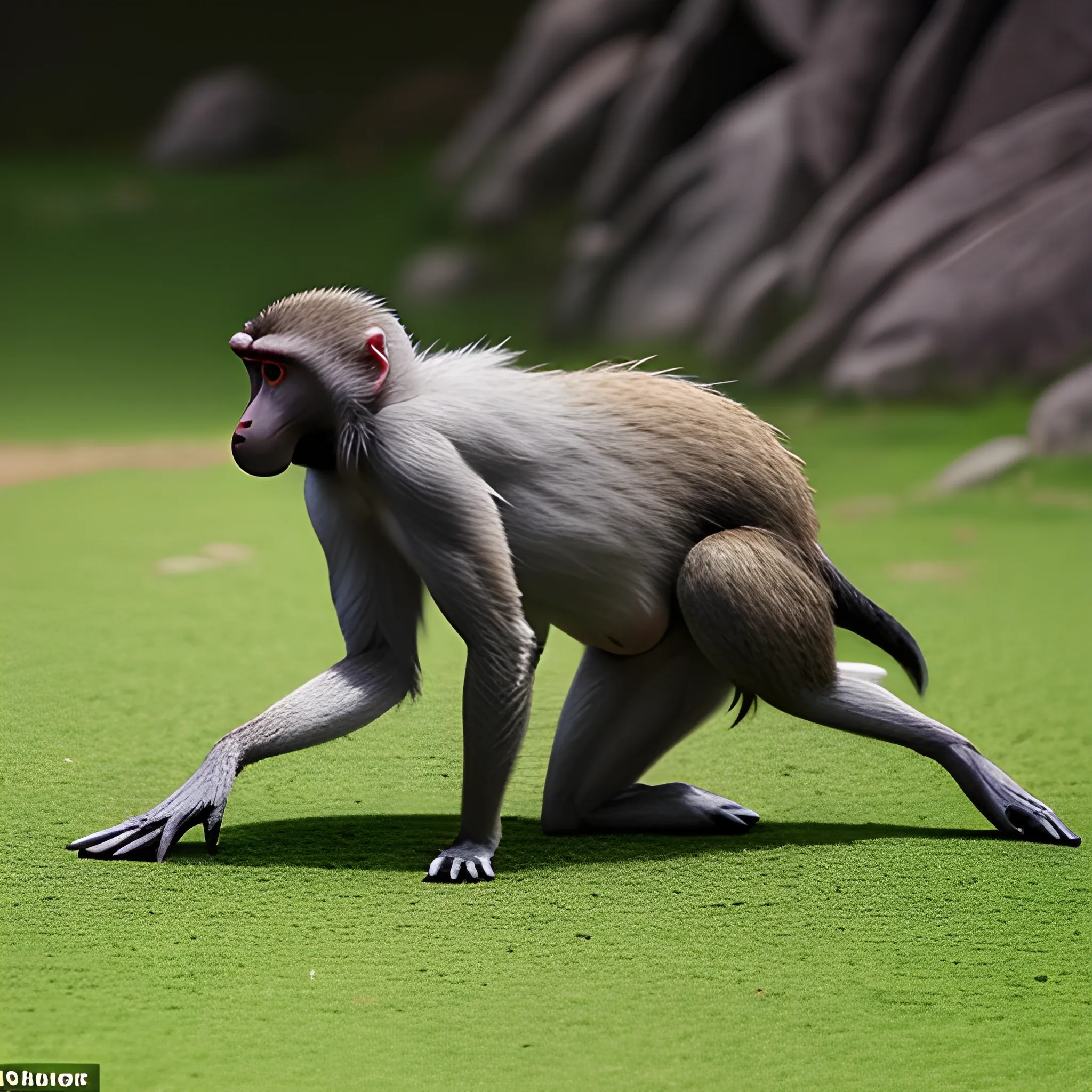Search Results for Social interaction
Explore AI generated designs, images, art and prompts by top community artists and designers.

The Megalosaurus Orca is a colossal marine hybrid dinosaur , measuring between 40 to 60 feet in length and weighing an astonishing 50 to 75 tons. Its body combines the robust , thick musculature and mighty jaw strength of Predator X and Megalodon with the sleek hydrodynamics and agility of the Mosasaurus Hoffmannii and transient killer whale. The creature’s skin is armored with large , overlapping bony scales inspired by the Arapaima , offering both flexibility and formidable protection against predators and environmental hazards. Its coloration is sexually dimorphic: males boast a deep black base coat adorned with light gray tiger stripes , while females display a gray base with stark white tiger stripes. Both sexes feature vivid red bioluminescent photophores arranged in tiger stripe patterns along their flanks and dorsal fins , used for communication , intimidation , mating displays , and luring prey in the abyssal darkness. The Megalosaurus Orca’s rigid pectoral fins can tilt back to reduce drag during high-speed pursuits , enabling bursts of speed up to 82 mph , rivaling the Black Marlin and shortfin mako shark. Powerful flippers , inspired by the leopard seal , allow it to scoot or slide short distances on land , useful for navigating beaches and shallow coasts. Its head features powerful jaws lined with dozens of large , long canine teeth capable of delivering over 40 , 000 PSI bite force , capable of crushing almost anything in its path. The skull is flexible , allowing it to swallow large prey whole. Crown-of-Thorns starfish-like venomous spines stud its dorsal ridge , serving as a defensive mechanism against attackers , and it can regenerate lost spines and limbs rapidly , a gift from its axolotl heritage. Abilities: Dual Respiratory System: Equipped with both functional lungs and gills , it can breathe underwater and survive brief excursions on land , as well as thrive at depths from 500 to 9 , 800 feet. Mucus Defense: Inspired by the Atlantic hagfish , it secretes a thick mucus layer that deters parasites and predators while retaining moisture during surface rests or land visits. Blubber Insulation: A thick layer of blubber provides thermal insulation , antimicrobial protection , and aids in rapid healing of wounds. The blubber’s varying stiffness across the body creates a springlike swimming motion , enhancing speed and agility. Stealth Hunting: Utilizing the transient killer whale’s passive listening abilities and silent movement , it stalks marine mammals and large prey with deadly precision , avoiding echolocation to remain undetected. Bioluminescent Communication: Red photophores allow complex signaling in the dark ocean depths for social interaction , mating , and intimidation. Salinity Tolerance: Can thrive in a wide range of salinity levels , from freshwater estuaries to the deep ocean , thanks to genetic traits from Mexican molly and saltwater crocodile. Reproductive Strategy: Live births occur in crushing-pressure depths up to 9 , 800 feet. Offspring are born adapted to extreme cold and pressure. The social group consists of a male and two females , balancing speed/power and endurance/nurturing roles. Behavior and Social Structure: Megalosaurus Orca travel in small , tight-knit family units of three , mirroring the transient killer whale’s social structure. The male leads high-speed hunts , using brute force and stealth , while females provide endurance and care for offspring. They communicate through low growls , barks , and the flashing of their bioluminescent stripes. Backstory: Created by the Ceno Evail Crossgen Corporation , the Megalosaurus Orca was engineered as the ultimate marine apex predator and survivor , blending the most fearsome traits of prehistoric and modern oceanic hunters. Designed to dominate both shallow and abyssal waters , it represents a pinnacle of genetic engineering with a lifespan reaching up to 135 years. Its creation was part of a secret project to explore deep-sea resource harvesting and marine ecosystem control , but its intelligence and adaptability have made it a subject of fascination and caution among researchers. ,

The Megalosaurus Orca is a colossal marine hybrid dinosaur , measuring between 40 to 60 feet in length and weighing an astonishing 50 to 75 tons. Its body combines the robust , thick musculature and mighty jaw strength of Predator X and Megalodon with the sleek hydrodynamics and agility of the Mosasaurus Hoffmannii and transient killer whale. The creature’s skin is armored with large , overlapping bony scales inspired by the Arapaima , offering both flexibility and formidable protection against predators and environmental hazards. Its coloration is sexually dimorphic: males boast a deep black base coat adorned with light gray tiger stripes , while females display a gray base with stark white tiger stripes. Both sexes feature vivid red bioluminescent photophores arranged in tiger stripe patterns along their flanks and dorsal fins , used for communication , intimidation , mating displays , and luring prey in the abyssal darkness. The Megalosaurus Orca’s rigid pectoral fins can tilt back to reduce drag during high-speed pursuits , enabling bursts of speed up to 82 mph , rivaling the Black Marlin and shortfin mako shark. Powerful flippers , inspired by the leopard seal , allow it to scoot or slide short distances on land , useful for navigating beaches and shallow coasts. Its head features powerful jaws lined with dozens of large , long canine teeth capable of delivering over 40 , 000 PSI bite force , capable of crushing almost anything in its path. The skull is flexible , allowing it to swallow large prey whole. Crown-of-Thorns starfish-like venomous spines stud its dorsal ridge , serving as a defensive mechanism against attackers , and it can regenerate lost spines and limbs rapidly , a gift from its axolotl heritage. Abilities: Dual Respiratory System: Equipped with both functional lungs and gills , it can breathe underwater and survive brief excursions on land , as well as thrive at depths from 500 to 9 , 800 feet. Mucus Defense: Inspired by the Atlantic hagfish , it secretes a thick mucus layer that deters parasites and predators while retaining moisture during surface rests or land visits. Blubber Insulation: A thick layer of blubber provides thermal insulation , antimicrobial protection , and aids in rapid healing of wounds. The blubber’s varying stiffness across the body creates a springlike swimming motion , enhancing speed and agility. Stealth Hunting: Utilizing the transient killer whale’s passive listening abilities and silent movement , it stalks marine mammals and large prey with deadly precision , avoiding echolocation to remain undetected. Bioluminescent Communication: Red photophores allow complex signaling in the dark ocean depths for social interaction , mating , and intimidation. Salinity Tolerance: Can thrive in a wide range of salinity levels , from freshwater estuaries to the deep ocean , thanks to genetic traits from Mexican molly and saltwater crocodile. Reproductive Strategy: Live births occur in crushing-pressure depths up to 9 , 800 feet. Offspring are born adapted to extreme cold and pressure. The social group consists of a male and two females , balancing speed/power and endurance/nurturing roles. Behavior and Social Structure: Megalosaurus Orca travel in small , tight-knit family units of three , mirroring the transient killer whale’s social structure. The male leads high-speed hunts , using brute force and stealth , while females provide endurance and care for offspring. They communicate through low growls , barks , and the flashing of their bioluminescent stripes. Backstory: Created by the Ceno Evail Crossgen Corporation , the Megalosaurus Orca was engineered as the ultimate marine apex predator and survivor , blending the most fearsome traits of prehistoric and modern oceanic hunters. Designed to dominate both shallow and abyssal waters , it represents a pinnacle of genetic engineering with a lifespan reaching up to 135 years. Its creation was part of a secret project to explore deep-sea resource harvesting and marine ecosystem control , but its intelligence and adaptability have made it a subject of fascination and caution among researchers. ,

Appearance: The Baboon is a medium-sized primate with a distinctive and charismatic appearance. It has a robust and muscular body , covered in short fur that can range in color from brown to gray or even olive-green. Baboons have a dog-like snout , sharp teeth , and a hairless face with prominent cheek pouches , which they use to store food. They have long arms and powerful legs , allowing them to move quickly and with agility. Features: Baboons are highly social creatures , living in close-knit troops that can consist of a few individuals to larger groups. Their intelligence and adaptability enable them to survive in various environments , from lush jungles to arid savannahs. They are known for their strong social hierarchy and complex communication , using vocalizations , gestures , and facial expressions to convey emotions and intentions. Habitat: Baboons are versatile animals that can thrive in a range of habitats , including forests , grasslands , and mountainous regions. They are often found near water sources , as they require regular access to drinking water. In your DND world , baboons might inhabit areas with lush vegetation or live in proximity to humanoid settlements , scavenging for food scraps. Behavior: Baboons are opportunistic omnivores , with a varied diet that includes fruits , leaves , seeds , insects , and small animals. They are skilled climbers and can use their agility to escape predators or reach high-up food sources. Baboons are known for their playfulness , engaging in social interactions , grooming , and even games with each other. Role in the World: In your DND world , baboons could serve as a part of the natural ecosystem or be associated with certain deities or nature spirits. Druids and rangers might have a special connection with baboons , viewing them as symbols of adaptability and community. Encountering baboons in the wild could present various opportunities for adventurers. They might have non-combat interactions with the primates , such as observing their social behaviors or using animal handling skills to communicate with them. Baboons could also play a role in quests involving local tribes or settlements , where their presence might be considered either beneficial or problematic depending on the circumstances. While not inherently aggressive , baboons can defend themselves and their troop if they feel threatened , making it essential for adventurers to approach them with respect and caution. ,

Appearance: The Baboon is a medium-sized primate with a distinctive and charismatic appearance. It has a robust and muscular body , covered in short fur that can range in color from brown to gray or even olive-green. Baboons have a dog-like snout , sharp teeth , and a hairless face with prominent cheek pouches , which they use to store food. They have long arms and powerful legs , allowing them to move quickly and with agility. Features: Baboons are highly social creatures , living in close-knit troops that can consist of a few individuals to larger groups. Their intelligence and adaptability enable them to survive in various environments , from lush jungles to arid savannahs. They are known for their strong social hierarchy and complex communication , using vocalizations , gestures , and facial expressions to convey emotions and intentions. Habitat: Baboons are versatile animals that can thrive in a range of habitats , including forests , grasslands , and mountainous regions. They are often found near water sources , as they require regular access to drinking water. In your DND world , baboons might inhabit areas with lush vegetation or live in proximity to humanoid settlements , scavenging for food scraps. Behavior: Baboons are opportunistic omnivores , with a varied diet that includes fruits , leaves , seeds , insects , and small animals. They are skilled climbers and can use their agility to escape predators or reach high-up food sources. Baboons are known for their playfulness , engaging in social interactions , grooming , and even games with each other. Role in the World: In your DND world , baboons could serve as a part of the natural ecosystem or be associated with certain deities or nature spirits. Druids and rangers might have a special connection with baboons , viewing them as symbols of adaptability and community. Encountering baboons in the wild could present various opportunities for adventurers. They might have non-combat interactions with the primates , such as observing their social behaviors or using animal handling skills to communicate with them. Baboons could also play a role in quests involving local tribes or settlements , where their presence might be considered either beneficial or problematic depending on the circumstances. While not inherently aggressive , baboons can defend themselves and their troop if they feel threatened , making it essential for adventurers to approach them with respect and caution. ,
